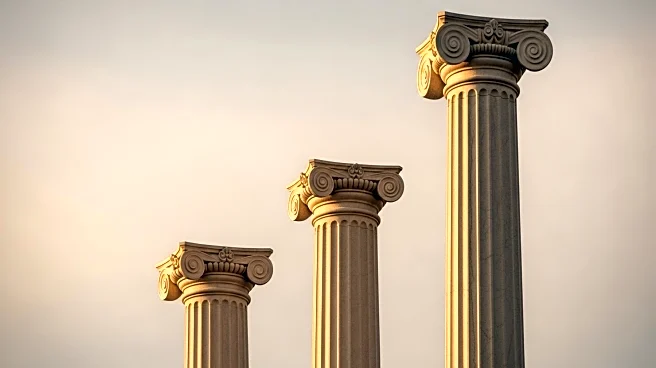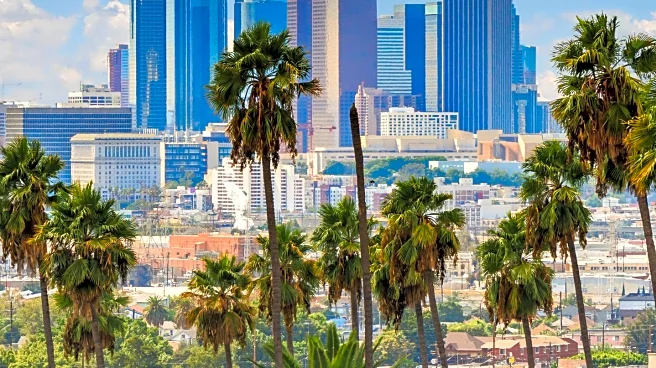What's Happening?
Los Angeles experienced significant architectural development during the 1930s, despite economic challenges such as the Great Depression and natural disasters. Iconic structures like the Pantages Theatre, Griffith Observatory, and Union Station were built during this decade. The city faced high unemployment rates and political corruption, yet managed to host the 1932 Summer Olympics. The period also saw major infrastructure projects, including flood control measures following devastating floods.
Why It's Important?
The architectural achievements of the 1930s in Los Angeles reflect the city's resilience and ability to innovate during difficult times. These buildings have become cultural landmarks, attracting tourists and contributing to the city's identity. The era's architecture showcases the influence of Art Deco and Streamline Moderne styles, highlighting shifts in design trends and societal changes.
Beyond the Headlines
The construction of these landmarks during a period of economic hardship demonstrates the role of architecture in shaping urban identity and cultural heritage. It also illustrates the impact of political and social factors on urban development.










